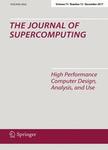版权所有:内蒙古大学图书馆 技术提供:维普资讯• 智图
内蒙古自治区呼和浩特市赛罕区大学西街235号 邮编: 010021

作者机构:Vellore Inst Technol Sch Comp Sci Engn & Informat Syst SCORE Vellore India
出 版 物:《JOURNAL OF SUPERCOMPUTING》 (超高速计算杂志)
年 卷 期:2024年第80卷第8期
页 面:11149-11190页
核心收录:
学科分类:0808[工学-电气工程] 08[工学] 0812[工学-计算机科学与技术(可授工学、理学学位)]
主 题:Cluster head Internet of things Enhanced crow swarm optimization Whale optimization algorithm Fuzzy logic
摘 要:The advent of Internet of Things (IoT) in agriculture has revolutionized the way farmers monitor and manage their crops. IoT-enabled sensors can provide real-time data on various environmental parameters such as temperature, humidity, soil moisture, and crop growth, which can be used to make informed decisions and optimize crop yield. However, the vast amount of data generated by these sensors poses a significant challenge in terms of data processing and communication. To address this challenge, clustering is often used to group the sensors into clusters and elect a cluster head (CH) to communicate with the gateway node. The selection of an appropriate CH and the optimal path for data transmission are critical factors that affect the performance of the IoT system. In this paper, we propose a novel approach to optimize the CH selection and path selection using modified fuzzy logic, Whale optimization algorithm (WOA) and enhanced crow swarm optimization (ECSO). Fuzzy logic is used to evaluate the relevant parameters such as energy, distance, overhead, trust, and node degree to select the most suitable CH. ECSO is then employed to find the optimal path for data transmission based on the selected CH. We evaluate the proposed approach using simulation experiments in a smart agriculture scenario. The results show that the proposed approach outperforms existing approaches in terms of throughput, packet delivery ratio, delay, and energy efficiency. The proposed system demonstrates substantial advantages in terms of throughput, with a remarkable throughput value of 68 Mbps, outperforming the other methods, including EQSR (12.5 Mbps), E2S-DRL (60 Mbps), and OSEAP. The packet delivery ratio (PDR) is also significantly higher for the proposed system, reaching 90.9%. The proposed approach can significantly improve the performance of IoT-enabled smart agriculture systems, leading to better crop yield and higher profitability for farmers. The results of the simulation experiments